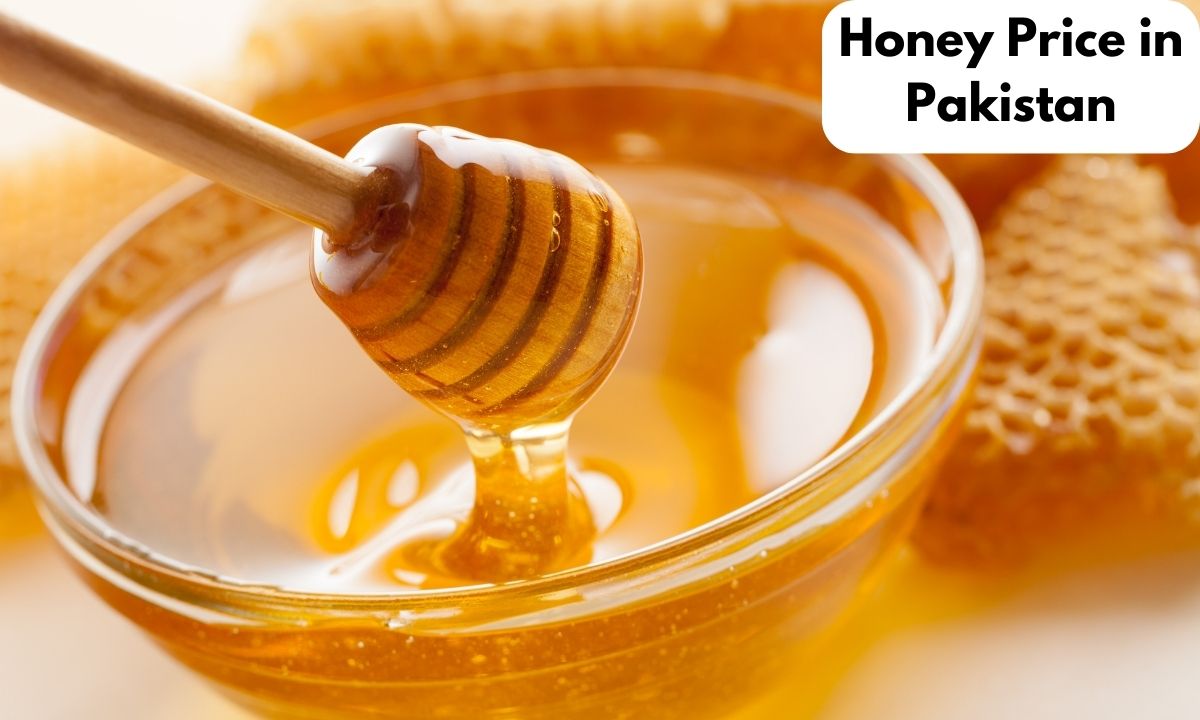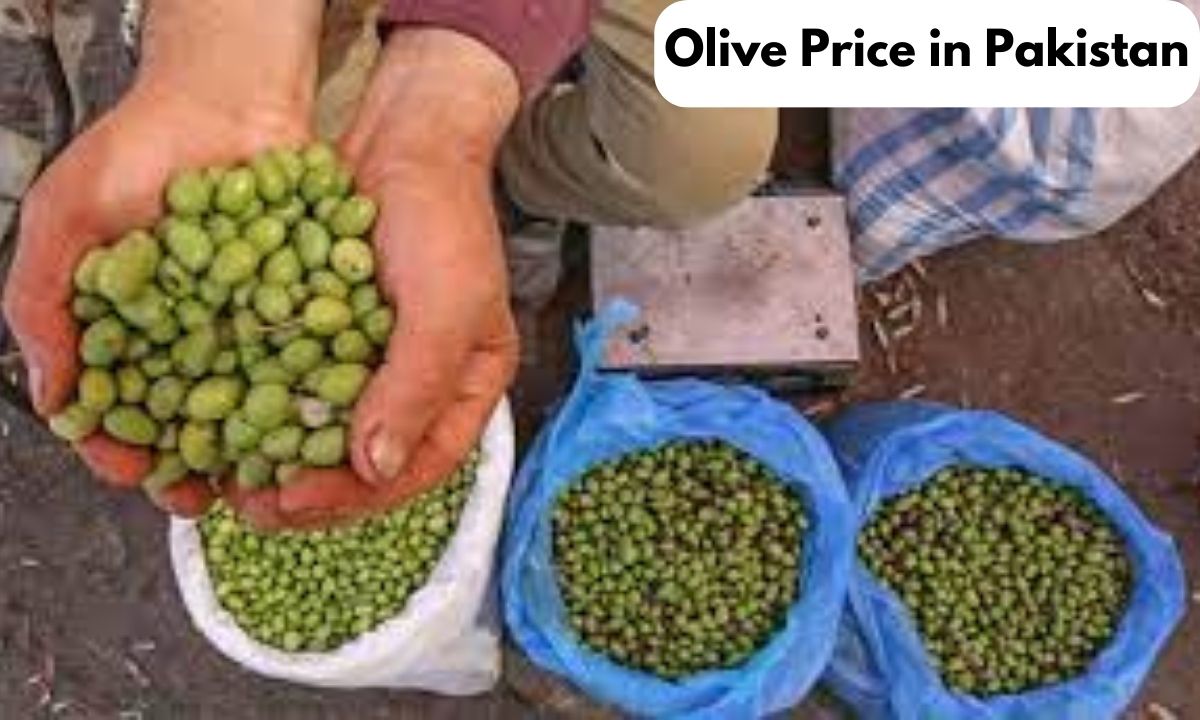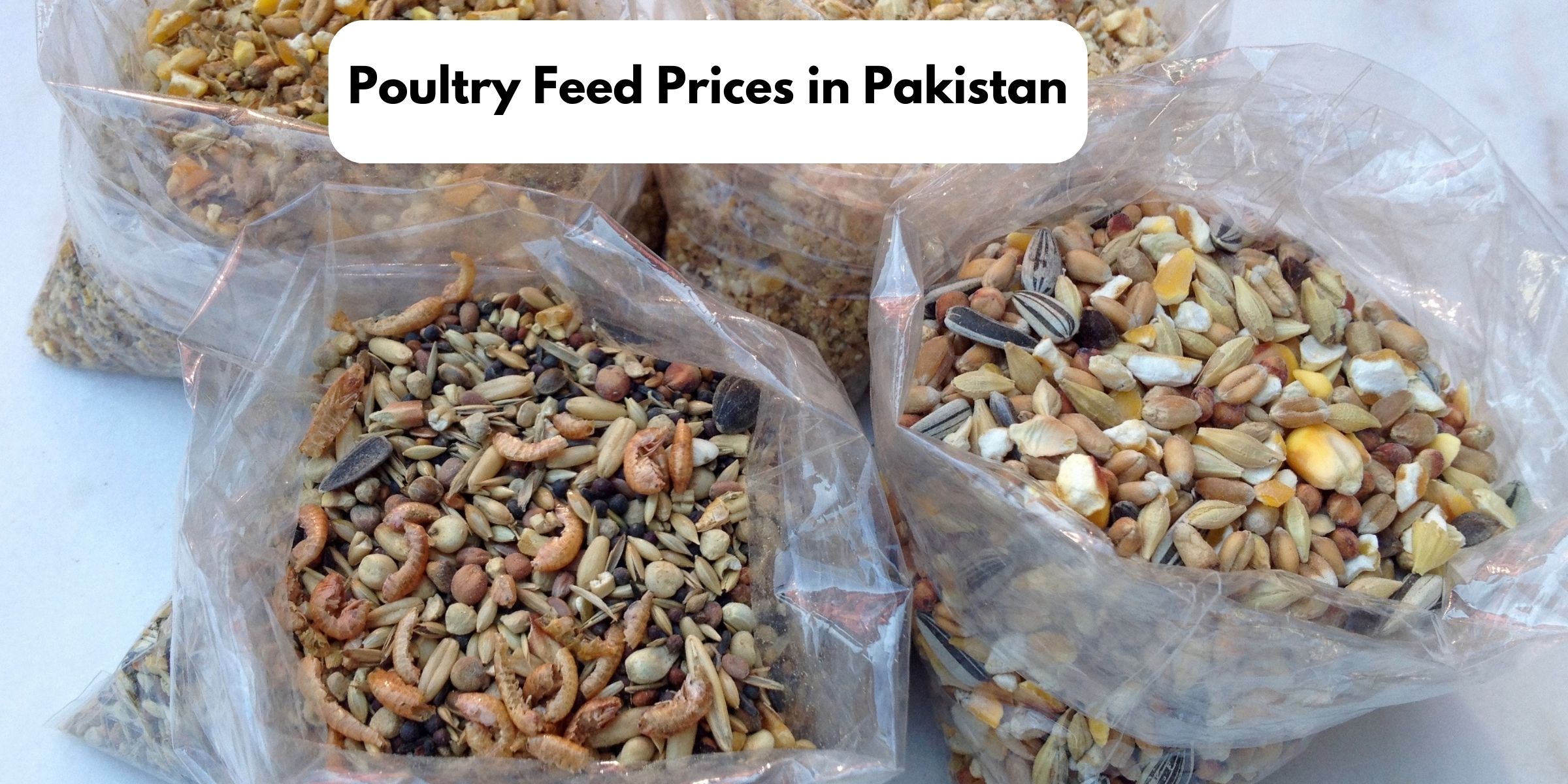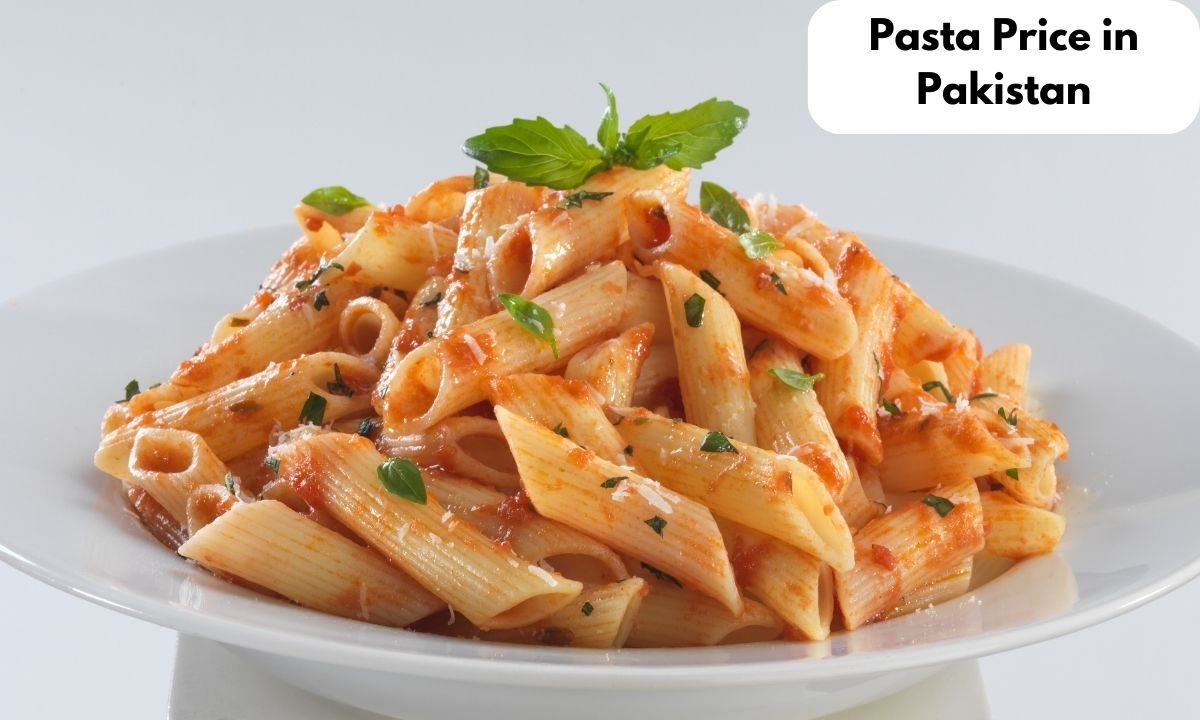Honey Price in Pakistan (Latest Price Guide)
Nestled in the heart of Pakistan lies a thriving industry centered around honey. This golden nectar isn’t just a favorite sweetener; it’s a vital part of the nation’s economy. In Pakistan, we find a range of honey types, like Sidr and Acacia, each carrying its distinct flavor and health advantages. Presently, the cost of genuine honey in the country fluctuates between Rs. 1490 and Rs. 3490 per kilogram.
This pricing considers various elements, such as the specific type of honey, the expenses of making it, and how much people want it. Venturing further into Pakistan’s honey scene reveals its production process, the main contributors, and the hurdles they confront. Additionally, we’ll reflect on the promising future this precious product holds, anticipating its impact on Pakistan’s economic landscape in the forthcoming years.

Price of Pure Honey in Pakistan
The cost of genuine honey in Pakistan can vary notably based on its type and origin. Take, for example, Sidr Beri honey, an organic variant prized for its deep flavor; its price can oscillate between PKR 4,000 and PKR 8,000 per kilogram. Likewise, standard Sidr honey can be found between Rs. 2,500 to Rs. 5,000 per kg. Broadly speaking, prices can start as low as Rs 530 and escalate up to Rs 10,500 per kilogram, contingent on various elements.
Several determinants shape honey’s pricing in Pakistan. Factors like the specific kind of honey, its production locale, branding, and overall quality play pivotal roles. Additionally, the origin of the honey and its production region contribute to its price dynamics. For instance, given that Sidr honey predominantly originates from Punjab in Pakistan, this regional specificity can influence its market value.
Furthermore, Pakistan’s honey industry grapples with a series of challenges that exert pressure on pricing. Issues such as outdated production techniques, threats from pests, and insufficient access to financial resources are notable hindrances. Environmental concerns like climate variations and deforestation further strain production, subsequently causing price shifts in the market.
Overview of Different Honey Brands Prices in Pakistan
| Brand | Product | Price (PKR) |
| Khalis Things | Sidr Honey, 500g | 1999 |
| Khalis Things | Sidr Honey, 1kg | 3800 |
| Karachi Dry Fruits | Sidr Honey, 1kg | 2500 – 5000 |
| Organic Aprico | Raw and Pure Honey, 1kg | 1800 – 3000 |
| Al Thaqafah | Sidr Honey | 1290 – 3490 |
| Langnese | Pure Bee Honey, 500g | 2145 |
| Salman Pak | Honey, 400g | 2695 |
| Daali | Pure Honey, 370g | 675 |
| Youngs | Natural Honey Bee Hives, 500g | 850 |
| Alshifa | Honey Natural, 1kg | 3695 |
| The Nature’s Store | Khalis Bairi Honey (Sidr) – Hunza | 1300 |
| The Nature’s Store | Eucalyptus Honey | 999 |
Types of Honey in Pakistan
Pakistan stands proudly as the 20th largest honey producer worldwide, boasting a diverse array of honey varieties, each with distinct qualities and health advantages. Among these, Sidr honey, alternatively recognized as Beri or Ziziphus honey, holds a distinguished status. Revered for its robust flavor profile, Sidr honey is celebrated for its medicinal attributes.
It possesses qualities that combat infections, bolster the immune system, enhance digestive functions, and even address skin ailments like acne, sun damage, and signs of aging. Beyond skin deep, Sidr honey finds its utility in treating liver ailments, stomach ulcers, respiratory infections, and the repercussions of malnutrition.
Parallelly, Acacia honey carves its niche in the Pakistani honey panorama. Recognized for its antioxidant and antibacterial prowess, this variant aids in wound healing, wards off bacterial infections, and is rich in flavonoids— potent antioxidants. Consuming Acacia honey can support heart health, facilitate weight management, and promote a natural digestive rhythm.
Furthermore, Pakistan’s honey tapestry includes other distinctive varieties such as Orange, Eucalyptus, Sunflower, and Multi-flora Himalayan honey. Each variant brings its unique nutritional and therapeutic benefits, enriching Pakistan’s multifaceted honey market.
Geographically, the production of these diverse honey types is dispersed across Pakistan’s varied regions—Punjab, Khyber Pakhtunkhwa, Balochistan, and Sindh—each region contributing its unique floral tapestry conducive to honey cultivation.
Buying Honey Online in Pakistan
Purchasing honey through online channels in Pakistan emerges as a seamless and effective approach to exploring diverse honey varieties originating from various regions of the nation. Prominent online marketplaces such as Daraz.pk, Al-Thaqafah, Naheed.pk, Gilgit Bazar, and OrganicHoney.com.pk curate an extensive selection of honey offerings.
These platforms furnish comprehensive insights into the honey variants, detailing their provenance and health-enhancing attributes, and empowering consumers to make enlightened choices.
A salient advantage of online honey procurement is the unmatched convenience it extends. Enthusiasts can leisurely peruse a myriad of honey selections, juxtapose prices, scrutinize customer feedback, and finalize purchases, all from the comfort of their abodes. Such a modality proves invaluable, especially for those devoid of proximate access to brick-and-mortar establishments vending premium-grade honey.
Additionally, the allure of doorstep delivery amplifies the online honey-buying experience. A majority of these digital platforms proffer nationwide delivery services, simplifying the acquisition process for patrons. This obviates logistical hassles, conserves time, and caters effectively to individuals ensnared in hectic schedules.
Furthermore, the competitive pricing coupled with periodic discounts prevalent on online platforms augments the economic feasibility of procuring honey digitally vis-à-vis traditional retail avenues. The detailed product elucidations encompassing honey origins, nutritive values, and recommended applications further equip consumers with the requisite knowledge, facilitating judicious purchasing decisions.
Future of the Honey Market in Pakistan
The Pakistan Honey Market stands on the brink of substantial expansion, with forecasts suggesting a commendable compound annual growth rate (CAGR) of 10.41% by the projected period, potentially culminating in a valuation of USD 451.77 million by 2027.
This buoyant trajectory is underpinned by an escalating appetite for Pakistani honey, notably from Arab nations like Saudi Arabia and the UAE. Pakistan’s rich tapestry of flora and favorable beekeeping milieu imbue its honey with distinctive flavors and unparalleled quality, solidifying its esteemed stature in Middle Eastern markets.
Furthermore, Pakistan’s variegated climatic regions present an expansive canvas for producing an eclectic range of honey variants, catering aptly to diverse consumer predilections and amplifying export prospects. Augmenting this momentum, the adoption of contemporary beekeeping methodologies and technological innovations is poised to catalyze market expansion further.
Governmental Endeavors Bolstering the Honey Sector
The Pakistani administration has unfurled an array of strategic interventions aimed at invigorating and fortifying the honey industry’s foundations. Foremost among these initiatives is the ‘Billion Tree Honey Initiative,’ a visionary blueprint designed to augment honey yields via strategic afforestation endeavors.
This initiative encompasses the cultivation of bee-beneficial tree species like Kao, Phulai, Ber, and Kikar. Concurrently, it integrates quality assurance mechanisms to elevate honey product standards while concurrently uplifting the socio-economic stature of beekeeping communities, thereby amplifying export competitiveness.
Complementing this is the TIKA Apiculture Research Development Program, meticulously crafted to imbue small-scale beekeepers with enhanced technical acumen and skill sets. This initiative accentuates eco-friendly honey production methodologies and facilitates the seamless transfer of empirical knowledge from Turkey to Pakistan.
A tangible manifestation of this collaboration is the inception of a state-of-the-art honeybee research laboratory in Islamabad, coupled with the deployment of avant-garde Turkish beehives aimed at optimizing honey yields and bolstering colony efficiency.
Conclusion
Within the enchanting realm of honey, Pakistan carves out a notable niche. With its pristine variants commanding prices between Rs. 1490 to Rs. 3490 per kilogram, the allure of honey transcends its mere monetary value in Pakistan.
Indeed, it emerges as a treasured asset, both enriching the nation’s economic fabric and bestowing myriad health advantages upon its consumers. From the luscious Sidr variant to the health-enhancing Acacia type, Pakistan’s honey spectrum is undeniably captivating.
The digital avenues offered by platforms like Daraz.pk and Al-Thaqafah further democratize access, ensuring that this liquid gold reaches every corner of the nation.
Peering into the horizon, Pakistan’s honey sector gleams with promise and potential.
Bolstered by forward-thinking governmental initiatives such as the ‘Billion Tree Honey Initiative’ and the TIKA Apiculture Research Development Program, the industry stands poised for exponential growth. As we navigate the intricate landscapes of Pakistan’s honey narrative, it becomes palpably evident: this saccharine marvel is not merely an economic cornerstone but a beacon illuminating the nation’s future prospects.





